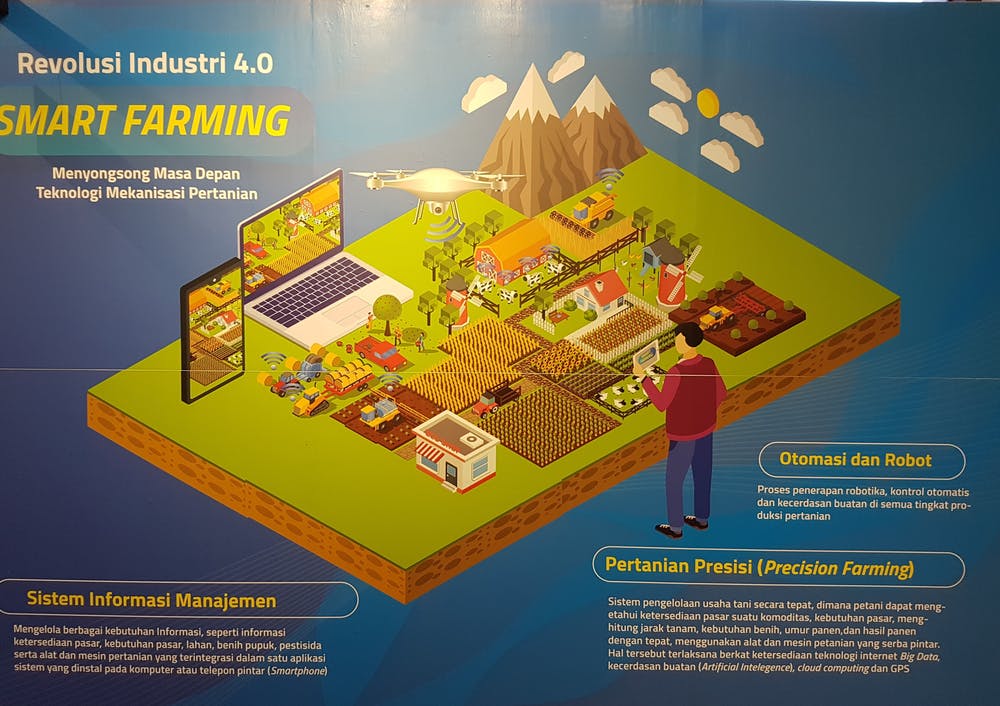 A digital revolution is taking hold in SE Asia, and it is not limited to having a smartphone and focused on digital natives but is touted as the next big industrial revolution to rival that of the west. It is globally called the Industry Revolution 4.0 (IR4.0) and is promoted in SE Asian countries as the strategic use of disruptive technologies and the internet of things (IoT) that will transform how people work, live, play and communicate. An integral part of this revolution is Digital Agriculture, which is promoted as large scale agriculture in the developed world but has strong potential for small scale agriculture in the developing world.
A digital revolution is taking hold in SE Asia, and it is not limited to having a smartphone and focused on digital natives but is touted as the next big industrial revolution to rival that of the west. It is globally called the Industry Revolution 4.0 (IR4.0) and is promoted in SE Asian countries as the strategic use of disruptive technologies and the internet of things (IoT) that will transform how people work, live, play and communicate. An integral part of this revolution is Digital Agriculture, which is promoted as large scale agriculture in the developed world but has strong potential for small scale agriculture in the developing world.
When I visited the Indonesian Agriculture Museum in Bogor in July, there was a striking display on the future of agriculture in the nation. It focuses on the use of automation supported through robotics, which collected big data and generated decisions using precision farming. The challenge was how we implement this aspiration when most of the farms in Indonesia are operated by smallholder farmers, who provide around 90 percent of Indonesia’s rice production, and each has less than 1 hectare of land. The high dependency on rice as a staple drives the national attention on knowing how much rice is planted, where it is planted, and what is harvested to ensure food security. Current practices are time-consuming and rely on expensive field surveys are needed to map rice extent. What is needed is a faster, reliable, and more regular monitoring to assess the rice production, and this can be done using high-resolution radar satellite.
The recent availability of this technology now provides us Sentinel 1 data and analysed through cloud computing and highly tuned algorithms we can more accurately know where areas are growing rice and at what stage of growth. As described in our work, we were able to ‘teach’ the computer to recognize different rice growth stages from radar satellite images. This was tested in Kedah and Perlis in Malaysia covering an area of 140,000 ha. Rice growth stage at every 10 m of land can be collated monthly. This was followed by work in Indonesia, where we mapped the central rice production in Bekasi, Kerawang, Subang, Indramayu, which is over 350,000 ha, providing the same detailed information. To ground-truth this extremely high-resolution predictions gained form the satellite imagery, we compared this with field-survey data, and we found the predicated extent of rice with 96.5% accuracy. We could also use the analysis to forecast areas that will be planted to rice up to two months ahead.
We foresee that this information would be readily available for determining national aspirations for crop insurance, the need for fertiliser subsidies, and other farming decisions. Currently, in some areas in Indonesia, plots of paddy fields are being mapped so the owner of each plot of land can access farmer credits & banking. All of which provides an improved business model. With the move of this technology to mobile Apps, future potential will see the opportunity to source crowd or public data including; farmers uploading information on market prices, sharing disease or pest or disease outbreaks, all of which is shared on the cloud to be relayed to other users.
The next stage is moving to develop and adopt digital technology focused on soil information that can be applied immediately to support such farmers. Already there is a collaboration with the Indonesian Agricultural Research Institute, where we developed a near infrared sensor that can estimate the soil’s capacity to retain nutrients. This now allows farmer groups to prescribe the right fertilizer recommendation and provides further evidence supporting the need for fertiliser subsidies.
Soil4.0, IoT, and digital technology are now available, and their availability to farmers in SE Asian countries will continue to grow. As with any revolution involving the smallholder farmers now in the future development of in the digital technology will build resilience and reduce uncertainty and vulnerability. We should build this digital technology now and make it the way agriculture is run.
Leave a Reply